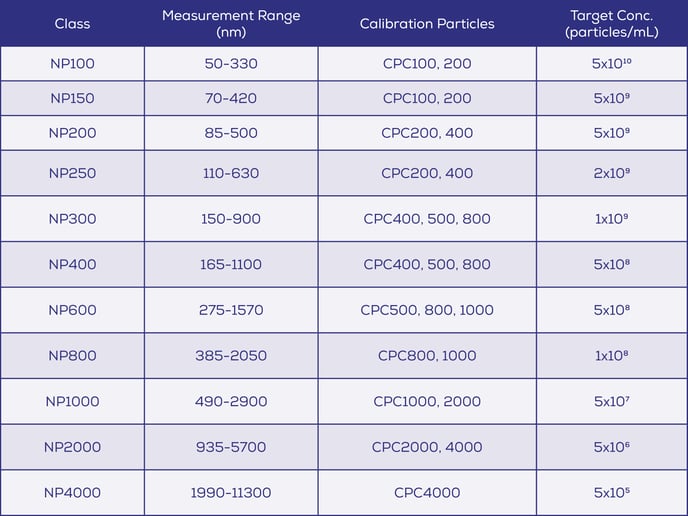Choosing a nanopore suited to your sample
Nanopores are available in a variety of sizes to accommodate particle characterisation across a broad size range.
The below table provides information about different nanopores, highlighting their associated measurement range, appropriate calibration particles, and target concentration at which measurements should be made.

The analysis range is indicative of particle sizes that can be analysed across the stretch range of the nanopore. Please note:
- If working at a lower size range, a higher concentration electrolyte than standard PBS may be used for the instrument to detect 40 nm particles.
- If working at a higher size range, a lower concentration electrolyte than standard PBS may be used for the instrument to detect up to 11,000 nm size particles without railing the electronics.
Tips and recommendations
- Voltage should be optimised when a baseline current has been established - typically to achieve a current of 120 - 140 nA
- For large nanopores, better results may be obtained by using a less conductive electrolyte. This will allow a larger voltage to be applied.
- When working at high stretch, it may be better to select larger calibration particles.
- It is possible to work below and above the suggested stretch range of 44 - 49 mm. At lower stretches there is a risk that the fluid seal to the upper fluid cell may be lost. At higher stretches there is a risk of the nanopores rupturing to a much larger size.
If your sample is very polydisperse, you may need to use multiple nanopore sizes to cover the size range. For example, if your sample ranges from 100 nm to 5000 nm, you will need to use more than one nanopore to detect particles across the entire size range. Shown below is a microbubble sample measured with different nanopores and stretch settings. 